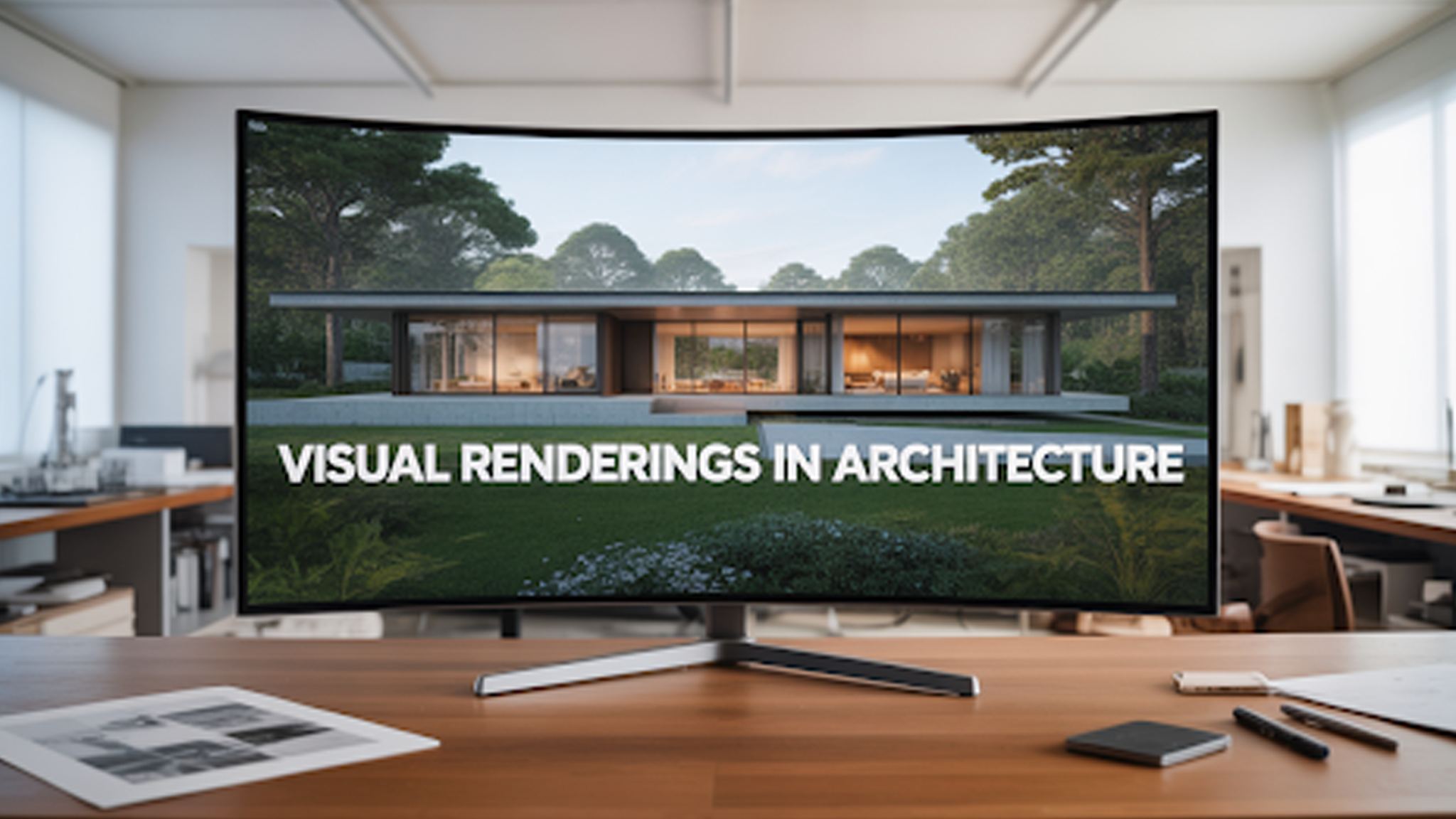A clear visual ends the debate. It turns abstract plans into one shared view. It cuts down on meetings. It removes layers of guesswork. That is why architectural rendering is now a staple in modern projects.
At AnimatedVideos.co, we see this every day. Our team creates architectural renderings that help architects, developers, and marketers move projects forward faster. Every stakeholder needs clarity. Architects, planners, regulators, and investors all look at the same drawing but see different things. Renderings fix that gap. They replace uncertainty with proof.
This article explains what architectural rendering is, how renderings slot into a project workflow, and concrete ways renderings improve design decisions.
Why Visuals Change Approvals
Architectural renderings simplify complex designs. A client sees the building in context, with light, scale, and texture. Regulators get a direct view of compliance. Investors see feasibility.
Reports from Transparent House show that submissions with clear visuals move faster through approval cycles. That happens because questions are answered upfront. A rendering works like a universal language in a process that often struggles with technical jargon.
What Is Architectural Rendering?
An architectural rendering is a visual representation of a design idea. It turns CAD files, BIM models, and sketches into images or interactive experiences.
The goal is clarity. Renderings show massing, materials, light, and context. They answer the client’s silent questions: “Will this feel like home?” or “Will this fit the site?”
Common Terms: Renders vs. Renderings
People say renders and renderings interchangeably. Both point to the same outcome: a visual output from a digital model. Some use architectural 3D rendering when they mean a three-dimensional, photoreal image or walkthrough.
Use the term that matches your toolset and delivery: still images, animations, or interactive models.
Types of Architectural Renderings
| Type | Description | Best Use Case |
| 2D Renderings | Simple and fast visuals, often flat and less detailed. Useful for sketches or material boards. | Early design concepts, quick ideas, and mood presentations. |
| 3D Renderings | Adds depth, light, and perspective. Shows how spaces look and feel in a realistic way. | Final design reviews, client presentations, and technical decision-making. |
| Photorealistic Renderings | Mimics reality with accurate lighting, textures, and camera settings. | Simulating real-world conditions like sunlight, materials, or environment. |
| Stylized Renderings | Simplifies or emphasizes design elements without aiming for realism. | Concept presentations where mood, form, or creative storytelling matter most. |
| Real-time / Interactive (AR/VR) | Allows clients to walk through designs, make live edits, or view overlays in real-world sites. | Client approvals, immersive design testing, and reducing feedback loops. |
How Renderings Save Money on Rework
Rework is one of the most expensive issues in construction. Small errors in planning create costly changes on site. Architectural renders highlight clashes early. They make visible what 2D drawings often miss.
Architectural renderings also reduce late-stage change orders. When clients and contractors know what to expect, they commit earlier. A single render can prevent days of costly labor adjustments later.
When to Use Architectural 3D Rendering
Not every stage needs high fidelity. But architectural 3D rendering works best when a project faces hesitation or scrutiny. Use it when:
- A client struggles to approve a layout.
- A regulator asks for clarity on context.
- Marketing needs to show livability and scale.
- Contractors must check technical coordination.
What Good Renders Must Show
Architectural renders should be functional, not decorative. They need to prove critical details, not just look polished. Essentials include:
- Accurate scale in context with surroundings.
- True material finishes with clear notes.
- Light studies at different hours of the day.
- Human scale elements to show proportion.
- Plan-linked callouts that connect back to drawings.
A photoreal render is impressive, but it must also serve a purpose. The goal is clarity for the people who will use it, not just an attractive image.
Who Benefits from Renderings
Every party involved in a project gains.
- Owners secure faster approvals and attract investors.
- Planners receive fewer clarifications during review.
- Builders face fewer last-minute changes.
- Marketing teams get visuals for sales campaigns.
The global market for rendering and visualization services reached billions of dollars in recent years and continues to grow. Industry forecasts show rising demand, driven by the proven value of visuals in planning and construction.
How to Brief a Visualization Team
Commissioning a render starts with a clear brief. Keep it short and factual. State:
- The audience for the render.
- The decision it must support.
- The materials and systems that need validation.
- The expected format and resolution.
Strong briefs save time. A visualizer who knows the goal will deliver faster and with fewer revisions.
How Pricing and Timelines Work
Costs depend on fidelity and scope. A schematic render takes less time and budget than a photoreal still. Animations or flythroughs add complexity.
Typical ranges:
- Schematic model: 1–3 days
- Photoreal still: 1–2 weeks
- Short animation: 2–6 weeks
Always ask for revisions in the quote. Request source files that connect back to your design model. That way, the render stays useful beyond the presentation.
Questions to Ask Your Visualizer
Good questions in the first call prevent problems later. These questions set expectations and avoid missteps with clear understanding:
- What software do you use and how does it connect to our model?
- How many revision rounds are included?
- Do you provide real-time models for early review?
- Can you deliver annotated views linked to plans?
Small Firm Approach
Smaller firms can get value without overspending. Focus on three assets per project:
- A schematic model for internal review.
- One photoreal render for approval.
- A polished still for marketing.
Handle the schematic in-house if possible. Outsource the photoreal. This balance keeps quality high and costs predictable.
Proof That Renderings Work
Industry adoption is broad. Most design firms rely on real-time rendering weekly. The shift from drawings alone to a mix of plans and visuals is now standard.
Projects show steady market growth in visualization services worldwide. That reflects one truth: visuals shorten decisions and reduce risk.
FAQs
Why are architectural renderings so important?
They transform intricate designs into understandable visual messaging. This increases stakeholder confidence, expedites approvals, and lessens misunderstandings.
What is the difference between drawings and architectural renders?
Technical details are explained through drawings. Architectural renderings show how a room will look and feel. To finish the design process, both collaborate.
How much does architectural 3D rendering cost?
It is dependent upon fidelity and scope. High-quality photoreal renders and animations are more expensive than simple schematic views. Additionally, prices differ by company and location.
How long does it take to produce a render?
A basic render can take a few days. Complex animations or detailed marketing visuals may take weeks. Clear briefs and good communication shorten the process.A basic render can take a few days. Complex animations or detailed marketing visuals may take weeks. Clear briefs and good communication shorten the process.
Can small firms afford professional renderings?
Yes. Many firms focus on a few key renders per project rather than a large set. Expert companies like AnimatedVideos.co also offer cost-effective packages for firms that need high-quality output without overspending.
Do renderings help with marketing?
Absolutely. Renderings are used in brochures, websites, and listings. They help sell spaces before they exist. At AnimatedVideos.co, we create visuals tailored for both approvals and marketing campaigns.
Which kinds of projects gain the most from rendering?
Residential towers, office buildings, mixed-use spaces, and even small interior projects. Any project that requires stakeholder approval or marketing gains value from clear visuals.
Is it always required to create photorealistic renders?
No. For internal review or early approvals, schematic or stylised images are sometimes sufficient. Marketing and final approvals are where photorealism is most helpful.
How do I choose the right rendering partner?
Look for a clear process, open pricing, and experience with your project type. Request references and samples of previous work.
Final thoughts
Architectural renderings are more than pretty pictures. They are decision tools. They translate technical data into human understanding. Whether you use quick 2D sketches, photorealistic architectural 3D rendering, or interactive AR walkthroughs, the goal is the same: reduce ambiguity and speed good choices.
At AnimatedVideos.co, we help architects, developers, and marketers turn abstract plans into visuals that persuade. Our renders focus on clarity, speed, and accuracy, so you can move projects forward with confidence.
A single right render can unlock a decision. It can shift a project from planning to reality. If your next project feels stuck, commission the render that clears the way.



